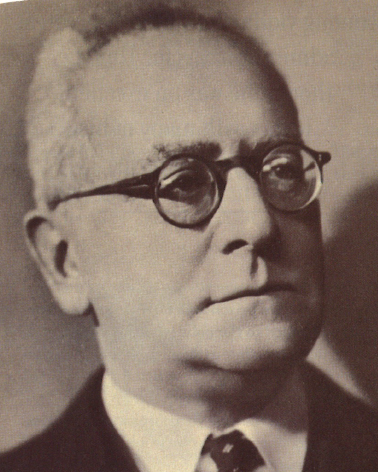Lebanese violinist Yfrah Neaman, who died in 2003, shared memories of his teacher with Evelyn Chadwick in December 1994

Discover more Featured Stories like this in The Strad Playing Hub
Carl Flesch began his teaching career at the Bucharest Conservatoire at the age of 24. He arrived in London 38 years later, in 1934, having taught at the Amsterdam Conservatoire, the Hochschule in Berlin and the Curtis Institute in Philadelphia. Not being offered any official position, he taught privately at 34 Canfield Gardens, Hampstead.
Yfrah Neaman was then a student at the Paris Conservatoire, but his mother had heard of Flesch. She felt that a boy of 14 still had a long way to go before completing his musical education, even though the Conservatoire had awarded him its fìrst prize. Flesch accepted him as a pupil in 1937 (at two-and-half guineas for 45 minutes) and he was slotted into the master's timetable. Flesch taught four pupils every morning; as they entered the house they would see the timetable in large letters, showing the names of those expected. There was no point in questioning the timetable in any way. 'That was your lesson, now you go,' he used to say. Or 'Why are you in London? To study with me. What can be more important than that?' 'He was right,' says Neaman. 'There was nothing more important.'
Flesch had a good deal of gravitas, Neaman remembers. He would sit in a low armchair wearing patent leather shoes and a velvet smoking jacket, and smoking a cigar. 'I was very struck by all this. He would make notes while you played and he expected a performance. He'd hear you, stand up, put the music on the stand and go over the points one by one, using his violin.' The unwritten rule was that students had at least one rehearsal the day before with Alan Richardson, the official accompanist.
The lessons were open to anyone who wanted to sit in, and Flesch's pupils quickly found out who was being taught when, so that they could hear the most interesting students. The number of listeners present was a measure of a student's 'success'. 'You were immediately part of a hierarchy. You knew, or found out very quickly, that if you were the 10 o'clock pupil you were the lowest of the low, and you had to work your way up to the 10.45 slot; 12.15 was at the level of Josef Hassid or Ida Haendel.'
Flesch was too intelligent and cultivated to ever be insulting or unkind. But he did care a great deal about his bowings and fingerings. He liked students to use his editions and, failing that, to copy out all the relevant details from his own library. Neaman accepts that nowadays some may condemn this, but points out that it is a valid method of learning one's craft. Flesch allowed other ways of playing only if he was convinced they were reasonable.
To illustrate this, Neaman tells the following story. 'I knew I had to copy out all his fingerings and bowings for a performance of Bloch's Nigun, which I'd been playing since the age of twelve. I wasn't being bolshy or arrogant, but I really thought I could play it the way I always had. When I handed him the music Flesch asked at once why I hadn't taken his fingerings and bowings. Feeling fairly pulverised I made my excuses and Flesch exploded. 'Well, it's a waste of time because you'll have to change it. But it's your 45 minutes, so play it.' He was really angry and the other pupils were delighted. I hardly knew how to put the bow on the string after that. But when I finished, Flesch said: 'It's all right. You don t have to change it.' I was over the moon, but I felt it was his triumph. He didn't mind eating his words in front of his students. Only a great man can do that.'
Read: Poetic injustice: Ysaÿe
Read: 'Tone virile and fine. Personality less striking' - Carl Flesch on David Oistrakh's playing
On another occasion Neaman decided to play an Ysaÿe sonata. In the 1930s Ysaÿe was relatively unknown and Neaman studied the work on his own before bringing it to the lesson. Flesch admitted he knew nothing of the work and said, 'I'm not sure I can help you, but play it anyway.' When he finished Flesch was kind about it, but he later said to Neaman's mother: 'Your son is really a very odd boy. He goes on trying to play pieces that no one else plays. Very peculiar. Do you know, I think he would make a good teacher'. These were prophetic words, but at that time nothing could have been further from Neaman's mind.
There were other occasions, Neaman says, when Flesch was not ashamed to admit he had nothing to say. He seemed not to be interested in the contemporary music of his day. He never mentioned Bartók, for example. Nor did he insist on repertoire, but would guide his students to a balance of works, without specifying composers. He expected them to be sufficiently aware to make their own choices. He never did studies or Paganini. So long as one followed his scale system on a daily basis, with perhaps some Ševčík, he seemed satisfied. 'He demonstrated adequately, with small inaccuracies, but because of the depth of his knowledge and sheer musicianship, it was marvellous. He was the first to admit his own failings. 'I've always had trouble with trills,' he said once, and it was true. He really couldn't trill well, even at moderate speed.'
Neaman believes that Flesch was not well known as a performer in Britain. In those days a man of 65 was considered old and someone who no longer performed in public. 'Yet his recording of the Beethoven Concerto is magisterial - certainly not dreary or pedantic. As a teacher he struck a balance between technique and musical content.' For Neaman the great revelation was that he could use technique to make the most of the music. Flesch would mark breathing spaces, shifts, phrasing and dynamics. His conviction was that if the body is not used in the correct way, the ideas will not emerge properly.
There is no doubt, Neaman says, that Flesch was the first violinist, to codify violin playing. Given by temperament to analyse and see things in an intellectual way, he was the first to articulate the 'point of contact', now a well-known concept in bowing, but one that was new in those days. Neaman relnembers that when he was taught in Paris as a small boy he was instructed to 'sound elegant' and 'make a lovely sound' when playing Mozart - but exactly how to do this was never discussed. Specific instruction on bow placement, so obvious to players now, was unheard of. Flesch knew that people could be helped to correct a faulty movement, and it was this that led him to write his monumental 'The Art of Violin Playing'. Then he wrote the scale system with the novel idea that one should play equally well in all keys. He expected all his students to tackle a different key each day in all its ramifications, down to double-harmonics.
He gave instructions about practising too, advising students to work in three stages: firstly, to approach the work in small sections; secondly, after some relaxation and breathing exercises, to play the work right through without stopping but mentally noting the places where there are problems; and thirdly, to work in immense detail on these places.
Flesch gave each student a notebook in which instructions were written on how to practise any technical problems arising during the lesson. Neaman still has his, in which one of the entries reads: 'You cant solve two problems simultaneously.' Neaman gives the following example. 'Suppose you have a problem with a detaché. The first thing to sort out is the left hand. Practise it legato so that you can heal what happens between each note, with every shift clean. Only then increase the speed, still legato. Attention can be turned next to the bowing, doing the detaché in repeated patterns of the same note. This minimises anxiety about the speed of the left hand, while concentrating on the bow. It goes without saying that the hand position on the bow conformed to the Franco-Belgian pattern, with pressure on the first finger', and so on.'
Read: Bow holds of the great violinists
Read: Bow hold: Gripping times
Discover more Featured Stories like this in The Strad Playing Hub




































No comments yet